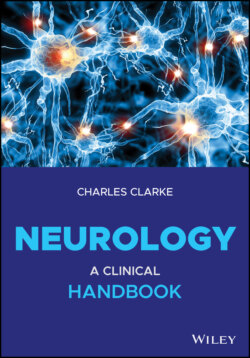Читать книгу Neurology - Charles H. Clarke - Страница 126
Cerebellar Signs
ОглавлениеLook for dysmetria (past pointing) and action tremor.
Dysmetria: place the patient’s forefinger on the point of your tendon hammer shaft, at the limit of their reach; ‘now, please touch the tip of your nose, and back’. Move the shaft to a different position. Do not test finger–nose–finger rapidly – this misses early dysmetria. Follow with other tests – try circular polishing of the dorsum of the opposite hand with a single finger, and alternating forearm pronation/supination.
In the lower limb heel–shin test:
Raise one leg, touch your opposite ankle with your heel and then move the heel up your shin, to the knee and down again.
Repeat the sequence. Simply gliding one heel up and down the shin can miss early ataxia.
Foot tapping also elicits incoordination.
Knee jerks with a pendular pattern ‐ slow and swinging ‐ or absent reflexes do occur with cerebellar disease, if seldom.
Dysarthria is usually obvious.
Nystagmus rarely occurs without other cerebellar features.
Remember: a midline cerebellar lesion may cause gait and trunk ataxia without limb ataxia.
